Cabinet Ideas for Entryway
- modersyinterior

The entryway serves as the first impression of a home, instantly indicating the homeowner’s good taste to visitors. When planning the design of an entryway, every element deserves careful consideration.
Choosing the right furniture is crucial; it must be practical and ensure the space remains uncluttered. Functional cabinets are a smart choice for entryways. They efficiently utilize limited space, providing ample storage for essentials without overwhelming the area.
Contemporary furniture designers present an array of cabinet styles for entryways, enabling homeowners to find an aesthetically pleasing and practical storage solution. Exploring these options allows selecting a cabinet to enhance the space and visually streamline the entryway’s organization.
Requirements for Entryway Furniture
- Functionality: The cabinet must come equipped with necessary compartments, such as spaces for shoes and umbrellas, to ensure it meets all storage needs.
- Aesthetic Appeal: Furniture designers offer an array of models to complement any decor style. Many cabinets include mirrored surfaces and an illumination system for added visual appeal and functionality.
- Ease of Use: The ideal piece of entryway furniture should camouflage any spatial flaws, neatly conceal shoes, and provide discreet storage for personal items like handbags and folders for documents.
- Durability: Preferably, the cabinet’s construction should involve hardware from reputable global manufacturers who stand by their products with warranties. Given that heavier items are often stored in the entryway, chosen models must be built to withstand such weight.
- Space Efficiency: The furniture should optimize, not overcrowd, the entryway space, which is particularly crucial in smaller hallways.
Selecting a Cabinet for Small Entryways
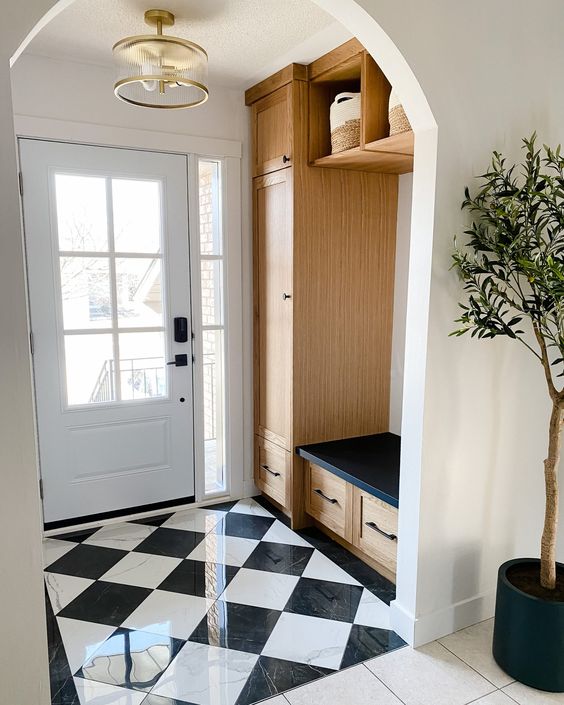
Implementing a cabinet in a compact entryway poses a challenge: it needs to be spacious for storage while occupying minimal space.
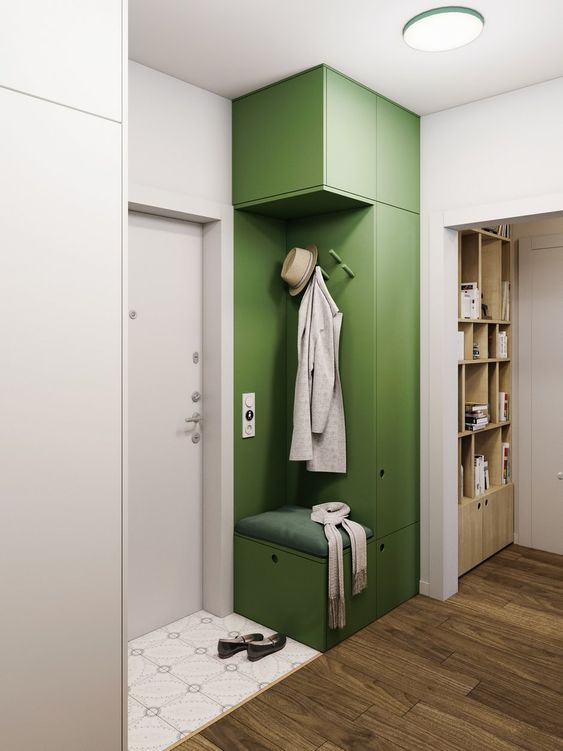
In colder seasons the volume of outerwear and footwear increases significantly. A practical approach includes mounting wall hangers for hanging coats and bags, alongside utilizing a dedicated shoe organizer for everyday footwear. Furniture sets designed for entryways often incorporate these features, such as a small overhead compartment for hats or unnecessary shoe storage.

Opting for a closet cabinet in small entryways is a rational choice. Even within limited spaces, innovative models are available to fit perfectly.
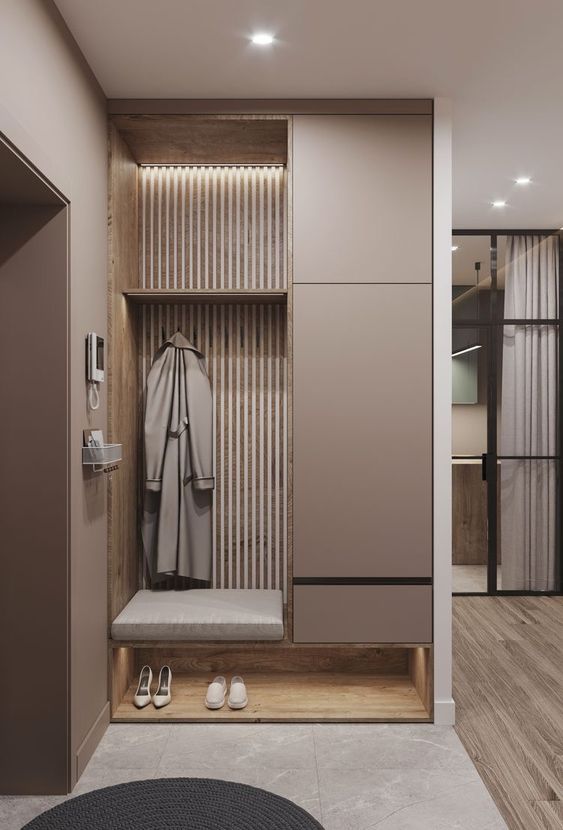
For corridors with restricted width, sliding door cabinets offer an efficient solution, eliminating the need for additional space for doors to open.
Choosing a tall, ceiling-high cabinet maximizes storage potential, with multiple compartments and shelves allowing for an organized and spacious storage system within a compact footprint.
Built-in Cabinets in Your Entryways
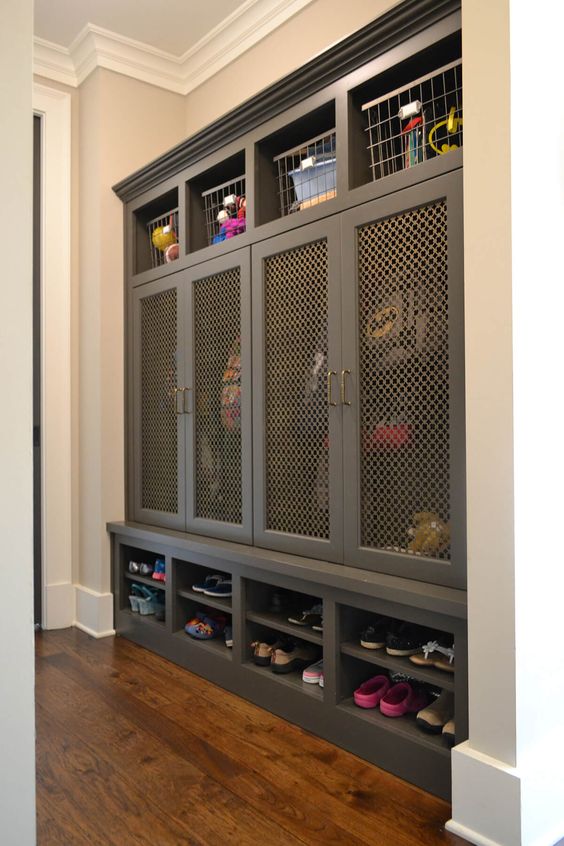
Leveraging a recess or niche within your hallway for furniture is a savvy move. Custom-built cabinets tailored to your specific dimensions are an excellent option.
There’s a vast array of designs for built-in closets suitable for hallways, their main limitation being their fixed installation, which precludes the possibility of moving or repositioning them later.

For hallways without niches, a closet presents a viable alternative with a single side wall. These units offer greater flexibility in furniture placement within the corridor space. In cases where the corridor lacks any recesses, opting for a conventional freestanding wardrobe with sliding doors is recommended, blending functionality with ease of installation.
Corner Cabinet in Your Entryways
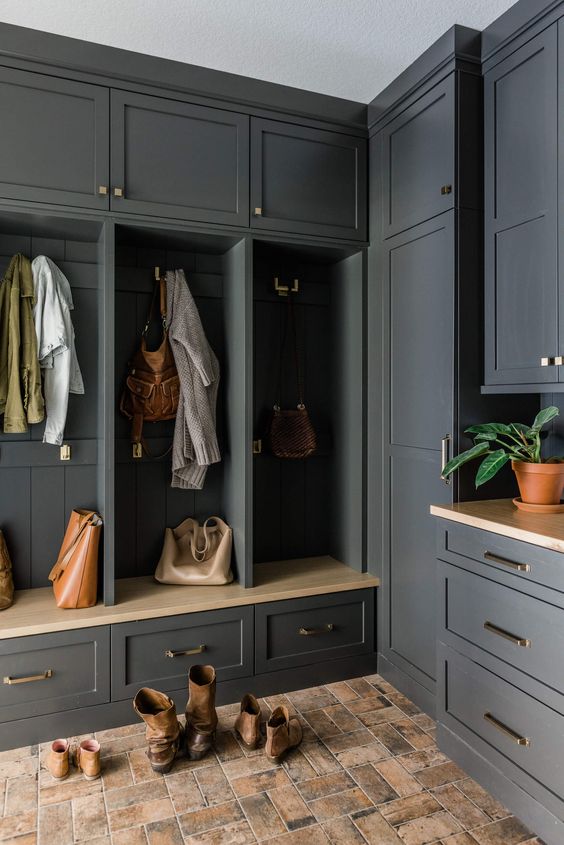
Incorporating a corner cabinet into your hallway maximizes space in smaller areas. It enables efficient utilization of the available room, facilitating the orderly and accessible storage of apparel and footwear.
Premises with unique architectural designs benefit immensely from corner furniture, adding a distinctive allure and warmth to the space.
This furniture choice is particularly appealing in larger hallways, where it blends seamlessly with the surroundings.
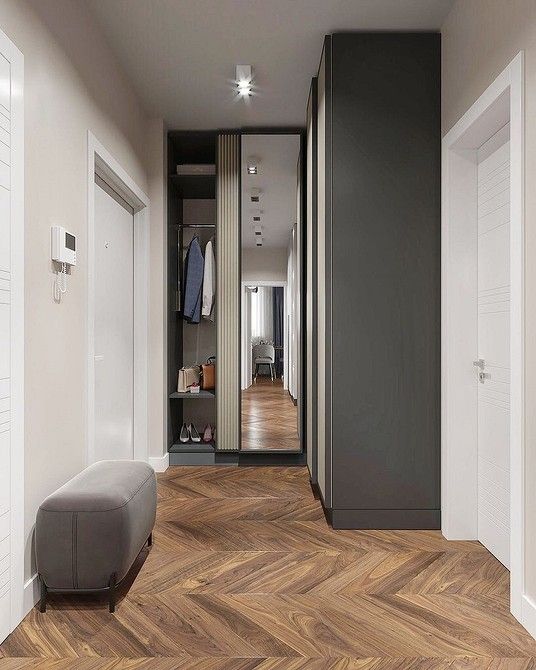
An ample space allows you to organize a separate dressing room. In contemporary apartments featuring open floor plans, homeowners can tailor their spaces according to personal preferences. Corner furniture is a practical solution for those wishing to minimize the hallway space. It effectively zones and delineates living areas from the entryway, allowing for a customized home layout arrangement.
Entryway Variants Featuring Closets
Exploring unique entryway designs incorporating a closet can lead to innovative and space-saving solutions. The original idea of a hallway with a cabinet-cupboard will be combined with a dressing table, making it convenient. You can get ready for work without fear of waking up the housemates. It also allows you to save space in the bedroom.
Poof or chair slides under the table without cluttering the passage. For better makeup application, think about additional lighting.

Utilizing the under-stair space for a closet presents a clever storage solution for those residing in duplex homes or individual houses. This area can be tailored for storing outerwear, footwear, domestic gadgets, or even converting it into a utility closet.

To maximize the utility and aesthetics of under-stair storage, consider the following tips:
- Choose furniture materials and colors that complement the staircase’s design.
- For spiral staircases, opt for compact storage units like miniature chests, drawers, or shelving.
- Consider sliding-door closets in areas with restricted space around stair openings.
- Opt for an open storage design with racks or shelves in modest staircases to create accessibility.
- Innovate with drawers of varying sizes and forms fitted under the staircase for a unique look.
- Incorporate a mix of closed cabinets and open shelving for a versatile storage solution, where shelves can display decorative items like photographs, vases, or sculptures.
- Implement pull-out features and drawers for streamlined storage.
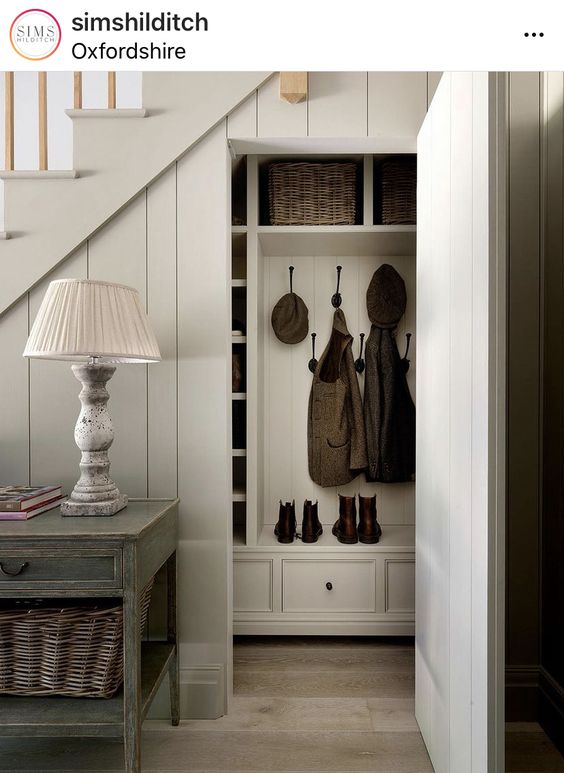
It’s crucial that the closet seamlessly integrates with the overall room design, enhancing the space rather than detracting from it. Consulting with professional designers is advisable to ensure the result is functional and aesthetically pleasing for such a specialized design.
Ideas of Internal Filling of the Cabinet in the Entryway

Achieving an organized storage space for clothing and footwear within your hallway necessitates a spacious closet and a meticulously planned internal arrangement. When selecting your hallway furniture, examining the setup inside is crucial. Here are several concepts for optimizing the inside of your hallway closet.
- Store items infrequently used on the top shelves, like seasonal footwear and luggage. This area is perfect for items you don’t reach for daily.
- Hang outer garments in the heart of the closet, thus opting for sturdy hooks for heavy items like fur coats or a hanging rod for items on hangers.
- Consider a small drawer or a shelf at hand’s reach for a designated spot for keys.
- Consider allocating a specific cabinet or sections within the main closet for shoes, adjusting compartment sizes based on your footwear preferences. Proper shoe storage is vital, preferably in a section that allows air circulation to aid in drying after wet weather.
- Think of space for handbags, which many prefer to keep accessible on a console table in the hallway or tucked away in the closet for privacy.
Should you opt for custom-sized furniture, manufacturers can present various configurations, ensuring you find a suitable setup for your needs.
Guidelines for Selecting the Ideal Entryway Cabinet

When outfitting your hallway, these straightforward suggestions can streamline the process and ensure practicality and style.
- Align your selection with the overall aesthetic of your residence to achieve a unified and appealing look.
- In compact spaces, opt for lighter-colored furniture to avoid a cramped atmosphere. Dark colors can visually reduce space, potentially creating discomfort. Mirrored elements on the closet’s exterior can help to expand the area visually.
- Carefully consider the door mechanism that best suits your space and needs. Selecting a reputable furniture manufacturer guarantees a product crafted from safe, durable materials, complete with a substantial warranty.
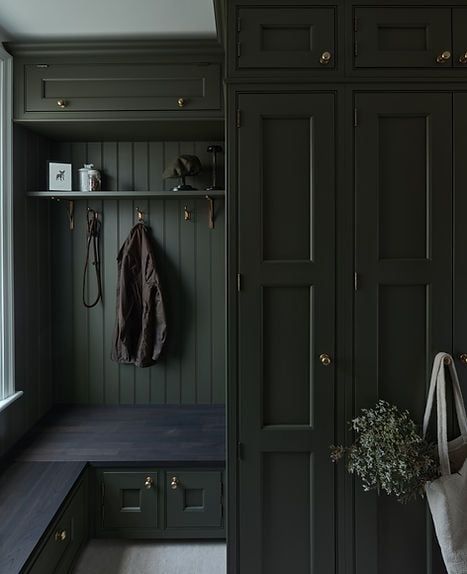
- Do not compromise on the quality of fixtures and fittings. Opt for hardware from reputable brands known for their durability and longevity, ensuring the closet’s functionality for years.
- Evaluate the construction material carefully. Laminated particle boards and MDF are popular choices due to their eco-friendliness, durability, and ease of maintenance. These materials do not utilize harmful substances in their production and are known for their sturdy construction.
- Maintenance should be straightforward, especially in the hallway, where dirt and marks are daily. Choose surfaces that can be easily cleaned with a damp cloth. Consider laminated particle boards in various colors or mirrored panels for added aesthetic appeal for door fronts.
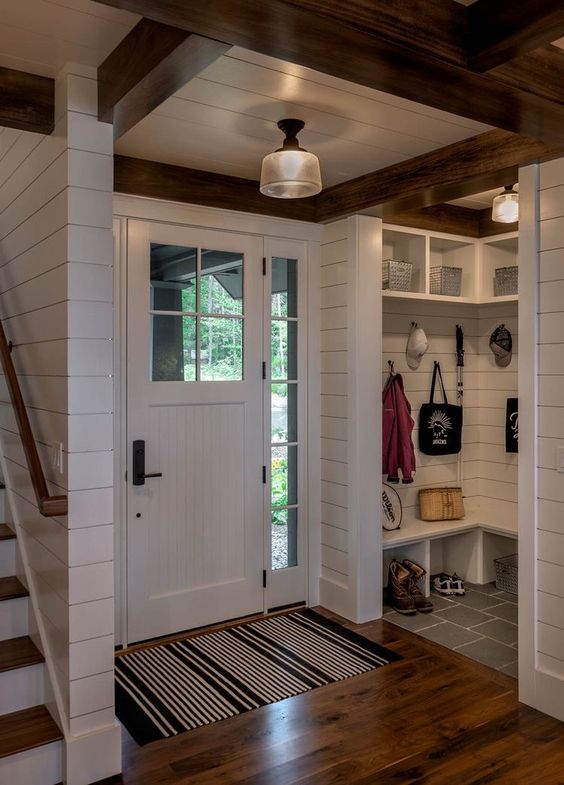
In conclusion, a well-chosen cabinet can transform the entryway into a functional and stylish space that sets a positive tone for the rest of the home. By carefully considering the cabinet’s size, style, material, and internal organization, homeowners can create an entryway that is both inviting and efficient, making a lasting impression on guests and providing a practical solution for everyday storage needs.
